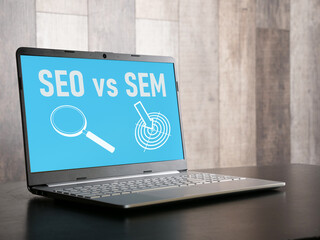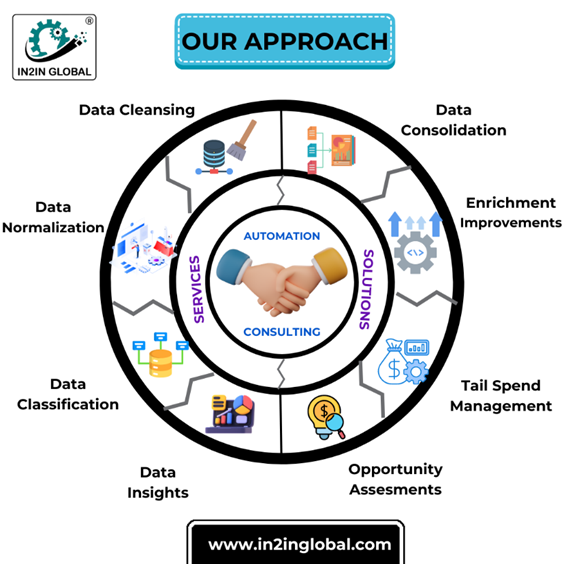SEO vs SEM: A Battle for Digital Dominance
Introduction:
In the ever-evolving landscape of digital marketing, two acronyms reign supreme: SEO (Search Engine Optimization) and SEM (Search Engine Marketing). Both are integral components of any successful online strategy, yet they operate in distinct ways and serve unique purposes. In this comprehensive guide, we will delve deep into the world of SEO and SEM, exploring their differences, similarities, and the ongoing battle for digital dominance.
Difference between SEO and SEM
- SEO vs SEM: The Key Differences
While SEO and SEM both aim to improve a website's visibility in search engine results, they operate on different principles and have distinct advantages and limitations. Here are some key differences between SEO and SEM:
- Cost: SEO is generally considered a long-term investment, as it takes time to see results and requires ongoing efforts to maintain rankings. On the other hand, SEM provides immediate visibility but requires a budget for advertising spend.
- Traffic Quality: Organic traffic generated through SEO tends to be more qualified and engaged, as users actively search for specific information or solutions. In contrast, SEM traffic may include a mix of qualified leads and casual browsers, depending on the targeting criteria used in advertising campaigns.
- Sustainability: SEO efforts can have a lasting impact on a website's visibility and organic traffic, even after discontinuing active optimization activities. In contrast, SEM results are temporary and cease once advertising campaigns are paused or budgets are exhausted.
- First Understanding SEO
While SEO and SEM both aim to improve a website's visibility in search engine results, they operate on different principles and have distinct advantages and limitations. Here are some key differences between SEO and SEM:
- Cost: SEO is generally considered a long-term investment, as it takes time to see results and requires ongoing efforts to maintain rankings. On the other hand, SEM provides immediate visibility but requires a budget for advertising spend.
- Traffic Quality: Organic traffic generated through SEO tends to be more qualified and engaged, as users actively search for specific information or solutions. In contrast, SEM traffic may include a mix of qualified leads and casual browsers, depending on the targeting criteria used in advertising campaigns.
- Sustainability: SEO efforts can have a lasting impact on a website's visibility and organic traffic, even after discontinuing active optimization activities. In contrast, SEM results are temporary and cease once advertising campaigns are paused or budgets are exhausted.
Search Engine Optimization, or SEO, is the practice of
optimizing a website to rank higher in organic search engine results. At its
core, SEO is about enhancing a website's visibility and relevance to attract
organic (non-paid) traffic from search engines like Google, Bing, and Yahoo.
Key elements of SEO include:
- On-Page
SEO: This involves optimizing individual web pages to improve their search
engine rankings and attract more relevant traffic. On-page SEO tactics
include keyword optimization, meta tags, title tags, and high-quality
content creation.
- Off-Page
SEO: Off-page SEO refers to activities conducted outside of a website to
improve its search engine rankings. This includes link building, social
media marketing, and influencer outreach to increase the website's
authority and credibility.
- Technical
SEO: Technical SEO focuses on optimizing the technical aspects of a
website to improve its search engine visibility. This includes website
speed optimization, mobile-friendliness, site architecture, and ensuring
proper indexing by search engines.
- The Power of
SEM
Search Engine Marketing, or SEM, is a broader term that
encompasses various strategies aimed at driving traffic to a website through
paid advertising on search engines. While SEO focuses on organic traffic, SEM
leverages paid tactics to achieve immediate visibility and results. Key
components of SEM include:
- Pay-Per-Click
(PPC) Advertising: Pay-Per-Click advertising allows businesses to bid on keywords
relevant to their products or services and display ads at the top of
search engine results pages (SERPs). Advertisers only pay when a user
clicks on their ad, making it a cost-effective way to attract targeted
traffic.
- Display
Advertising: Display advertising involves placing visual ads on
third-party websites, apps, or social media platforms to reach a broader
audience. These ads can be targeted based on demographics, interests, and
browsing behavior to increase their effectiveness.
- Remarketing:
Remarketing involves targeting users who have previously visited a website
or interacted with its content but did not complete a desired action, such
as making a purchase. By displaying targeted ads to these users as they
browse the web, businesses can reengage them and drive conversions.
The Synergy
of SEO and SEM
While SEO and SEM are often viewed as competing strategies,
they can actually complement each other when used together effectively. By
integrating SEO and SEM tactics, businesses can maximize their online
visibility and drive targeted traffic from both organic and paid channels. Here
are some ways to leverage the synergy of SEO and SEM:
- Keyword
Insights: SEM campaigns can provide valuable insights into the
effectiveness of specific keywords and phrases, which can then be used to
inform SEO strategies and content creation efforts.
- Cross-Channel
Promotion: By promoting high-performing SEO content through SEM channels,
businesses can amplify their reach and attract additional traffic to their
website.
- Remarketing
for SEO: Remarketing campaigns can be used to reengage users who have
previously visited a website through organic search, increasing brand
awareness and driving conversions over time.
Conclusion:
In the digital age, the battle for online supremacy is waged
on the search engine battlefield. SEO and SEM are two powerful weapons in the
arsenal of digital marketers, each with its strengths and weaknesses. By
understanding the differences between SEO and SEM and leveraging their
synergies, businesses can achieve greater visibility, drive targeted traffic,
and ultimately dominate the digital landscape. As search engines continue to
evolve and consumer behaviors shift, adapting and innovating will be key to
staying ahead in the ever-changing world of search engine marketing.
The Synergy
of SEO and SEM
While SEO and SEM are often viewed as competing strategies,
they can actually complement each other when used together effectively. By
integrating SEO and SEM tactics, businesses can maximize their online
visibility and drive targeted traffic from both organic and paid channels. Here
are some ways to leverage the synergy of SEO and SEM:
- Keyword
Insights: SEM campaigns can provide valuable insights into the
effectiveness of specific keywords and phrases, which can then be used to
inform SEO strategies and content creation efforts.
- Cross-Channel Promotion: By promoting high-performing SEO content through SEM channels, businesses can amplify their reach and attract additional traffic to their website.
- Remarketing for SEO: Remarketing campaigns can be used to reengage users who have previously visited a website through organic search, increasing brand awareness and driving conversions over time.
Conclusion:
In the digital age, the battle for online supremacy is waged
on the search engine battlefield. SEO and SEM are two powerful weapons in the
arsenal of digital marketers, each with its strengths and weaknesses. By
understanding the differences between SEO and SEM and leveraging their
synergies, businesses can achieve greater visibility, drive targeted traffic,
and ultimately dominate the digital landscape. As search engines continue to
evolve and consumer behaviors shift, adapting and innovating will be key to
staying ahead in the ever-changing world of search engine marketing.





Comments
Post a Comment